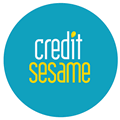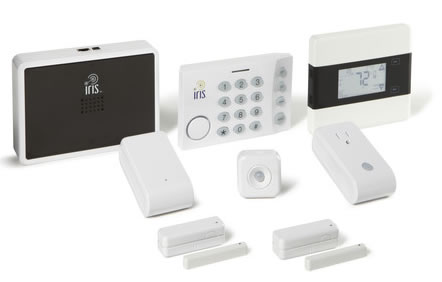 The baby shower is over and we’re on the home stretch. As a follow-up to my baby registry comparison, here’s our experience using both the Babies R Us and Amazon.com baby registries at the same time. We are blessed with lots of generous friends and family, and as a result have more stuff than we ever imagine a baby really needing! 😉 Baby Girl MMB isn’t even born and has more clothes than I do already.
The baby shower is over and we’re on the home stretch. As a follow-up to my baby registry comparison, here’s our experience using both the Babies R Us and Amazon.com baby registries at the same time. We are blessed with lots of generous friends and family, and as a result have more stuff than we ever imagine a baby really needing! 😉 Baby Girl MMB isn’t even born and has more clothes than I do already.
Babies R Us (BRU) Baby Registry
We chose BRU since we have one of their big box locations nearby and it was best for people who wanted to buy something at a physical store.
Ease of use. We went to the store and used their “gun” to scan all the items we wanted, and then we could go online to edit the registry further. Overall, the process went smoothly. However, the only way to discover if someone bought an item off the registry is to check the website regularly. You don’t get any notification e-mails, and you don’t get told who bought the gift until it arrives.
Returns. If the item is on your baby registry, then they take it back for store credit without a receipt or questions. If the item is not on the registry, then a gift receipt is required. If you don’t have a gift receipt, then I believe you get credit for the lowest price on that item for the last 30 or 60 days. With items like clothing that goes on sale frequently, that can result in a greatly reduced refund.
(Tip: You can add things on the baby registry at any time. Since we were juggling two registries, to avoid duplicates we would have to delete things on the other registry. However, sometimes we weren’t fast enough or someone bought it without removing it from the registry. Therefore, we just made sure we added the item back onto the registry again before our BRU return run and that minimized any potential hassles.)
Completion Discount. We received the 10% off completion coupon in the snail mail as promised. It works on only one purchase, so make sure to bring a list of everything else you wanted. You can also use the 10% discount online the same day you used the physical coupon.
Amazon.com Baby Registry
We chose Amazon as it had lower prices, wider selection, and free shipping on most items.
Ease of use. Adding items to the registry was easy, but Amazon can be quirky as the default buying option isn’t always the cheapest after you factor in the free shipping. I noticed that some friends paid too much for shipping, even though we always looked for items “sold by Amazon.com”. They don’t offer notification e-mails either, but if you check online they do tell you who bought what. It’s even condensed into a handy “Thank You list”.
Returns. Even though they offer free prepaid shipping labels, we didn’t return anything to Amazon. Whenever we had a duplicate, we just returned the one from Babies R Us. However, looking back I think I might have preferred Amazon.com credit since we really have too much baby stuff.
Completion Discount. When you become eligible (30 days before event date), the 10% completion discount option shows up on your registry page. The fine print was pretty vague, but didn’t really list any specific restrictions. However, we discovered that even though you could add anything to the baby registry at any time, only items that were deemed baby-related were eligible for the 10% discount. So no 10% off Macbook Pros or power tools (I tried).
Baby showers and the baby gift-giving custom is a nice cultural tool to help expectant parents defer the cost of babies. Really, you can view it as a payment plan of sorts since instead of one big lump sum we just have to continue giving baby gifts for the rest of our lives. 🙂



 If you have a dormant FNBO Direct account, you may be interested to know that they are offering a promotional rate of 1.35% APY beginning July 1, 2012 on all the money above what your balance was on June 29th, 2012. (Only available to existing FNBO Direct customers as of June 29, 2012.) Even better, the rate is guaranteed until December 31, 2012, making it better than 6-month CDs from other banks. All rates above have expired and FNBO is now offering a standard rate of 0.85% APY.
If you have a dormant FNBO Direct account, you may be interested to know that they are offering a promotional rate of 1.35% APY beginning July 1, 2012 on all the money above what your balance was on June 29th, 2012. (Only available to existing FNBO Direct customers as of June 29, 2012.) Even better, the rate is guaranteed until December 31, 2012, making it better than 6-month CDs from other banks. All rates above have expired and FNBO is now offering a standard rate of 0.85% APY.
 The Best Credit Card Bonus Offers – March 2024
The Best Credit Card Bonus Offers – March 2024 Big List of Free Stocks from Brokerage Apps
Big List of Free Stocks from Brokerage Apps Best Interest Rates on Cash - March 2024
Best Interest Rates on Cash - March 2024 Free Credit Scores x 3 + Free Credit Monitoring
Free Credit Scores x 3 + Free Credit Monitoring Best No Fee 0% APR Balance Transfer Offers
Best No Fee 0% APR Balance Transfer Offers Little-Known Cellular Data Plans That Can Save Big Money
Little-Known Cellular Data Plans That Can Save Big Money How To Haggle Your Cable or Direct TV Bill
How To Haggle Your Cable or Direct TV Bill Big List of Free Consumer Data Reports (Credit, Rent, Work)
Big List of Free Consumer Data Reports (Credit, Rent, Work)